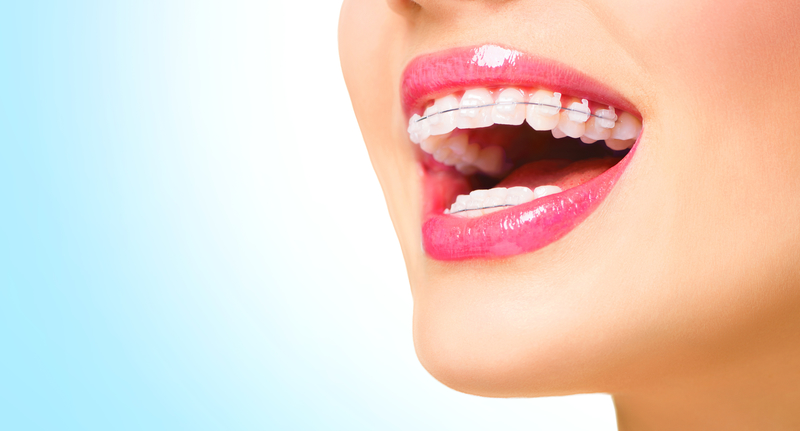Whitening Teeth With Braces

Keeping teeth clean during braces is an important part of your oral health regimen, but keeping teeth white with braces sometimes presents a problem. Teeth whitening with braces is a common practice that orthodontic patients have done to keep their teeth white during orthodontic care. Which teeth whitening treatment you use will depend on what type of braces you have. Achieving a whiter smile is not impossible with braces, but will need extra effort and care to protect your braces. Find out how you can both whiten and straighten your teeth at the same time with these tips and tricks!
In-Office versus At-Home Treatments
Teeth whitening has been a popular choice of treatment for dental patients for years now, but orthodontic patients can now receive the same treatment, too, while getting their teeth straightened at the same time. Keeping your teeth clean while undergoing orthodontic treatment is an important step in maintaining good oral health, and teeth whitening options can enhance that process. With the variety of treatment options that orthodontic patients now have to straighten their teeth, there are plenty of ways to whiten teeth while receiving care. For patients who prefer whitening their teeth at the dental office, one option that patients can choose is “chairside bleaching.” This process requires one or two office visits in which a strong bleaching agent is applied to the teeth combined with a special light to accelerate the whitening effect and lift stains. For patients with brackets on the front of their teeth, chairside bleaching can cause a two-tone effect after traditional braces are removed, so sometimes it is best to bleach after your treatment is over. For patients with lingual braces (on the backside of teeth), though, it is relatively easy to whiten teeth during treatment since teeth whitening focuses on the front of the teeth and not the back. Removable braces and retainers also allow for successful teeth whitening as they allow all of the teeth to be uncovered.
Many patients prefer at-home teeth whitening treatments over in-office treatments because it allows them the flexibility to decide when and where they whiten their teeth. For at-home treatments, gel similar to those used in dental offices will be given to you that is inserted into a customized tray which is fit to your mouth. The gel uses peroxide to bleach the tooth enamel and whiten the tooth. Even those with braces can use these custom trays after braces have been placed in the mouth. The trays have to account for the space that brackets use so the gel doesn’t displace the bracket from the tooth. With at-home treatments, though, there is a larger risk of sensitivity and gum irritation if bleaching material leaks out of the tray. Both options for teeth whitening allow patients the freedom to get the best results during their orthodontic treatment but still get the same benefits that braces offer.
Things To Consider
When deciding on which type of teeth whitening you should do, it is important to remember that the type of braces you have dictates what kind of teeth whitening you can receive. As teeth shift during orthodontic treatment, tooth sensitivity and gum irritation can increase when using mouth trays or teeth whitening strips at home. Traditional braces use brackets on the front side of the teeth to correct malocclusion while other options, like lingual braces, use brackets on the backside of teeth to straighten teeth. Whitening teeth with lingual or removable braces is much easier for patients than those with traditional braces as brackets prevent a good portion of the tooth from bleaching agents. For this reason, most orthodontists recommend using teeth whitening products once braces are removed for most effectiveness. If you do choose to use teeth whitener during treatment with traditional braces and you feel some sensitivity/tenderness, make sure to avoid whitening for a while to give your teeth a break. Chewing gum can also help with any pain you might feel from whitening agents, as well as using sensitivity toothpaste. For additional insights into what to expect when using teeth whitener with braces, meet with your orthodontist to discuss which option is best for your mouth.
Everyday Teeth Whitening
Many patients use everyday teeth whitening products to improve their smile rather than going to a dental office or using expensive products. As teeth whitening has become more popular, more and more products have been created to enhance smiles in the comfort of one’s home with a smaller price tag than traditional methods. For anyone, with or without braces, using a teeth whitening toothpaste is a great and easy way to whiten your smile and maintain good oral health at the same time. Even if you have sensitive teeth, there are still plenty of options for toothpaste that whiten teeth without putting your sensitive mouth at risk. There is also teeth whitening mouthwash that whitens and protects teeth from stains while freshening your breath at the same time. Switching from a manual to electric toothbrush can further whiten your teeth by polishing away surface stains that appear under braces. With all of the different dental items that can be tailored to your individual needs, you can have a whiter smile with braces in no time.
For more information on how you can whiten your teeth during orthodontic treatment, call Belmar Orthodontics at (303) 225-9016! Our team is committed to helping you and your family get the healthiest and brightest smile possible!
